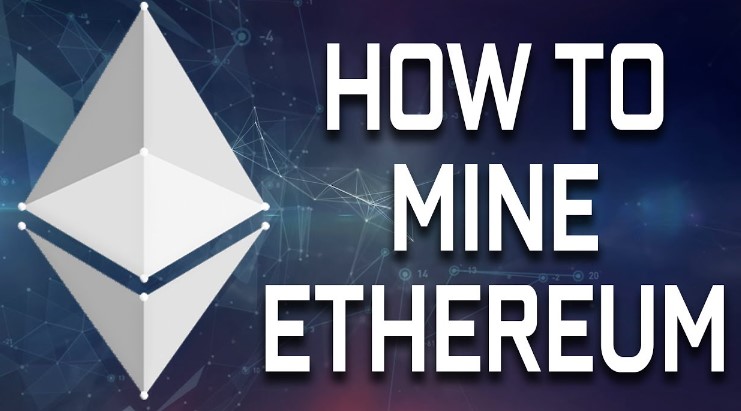Ethereum is a popular cryptocurrency that can be mined using your computer’s graphics processing unit (GPU). Mining Ethereum can be a profitable way to earn cryptocurrency and participate in the network’s transaction verification process. In this article, we’ll provide a step-by-step guide to mining Ethereum.
Step 1: Get a Wallet
Before you start mining Ethereum, you’ll need to create a wallet to store your mined cryptocurrency. There are many options for Ethereum wallets, including online wallets, desktop wallets, and hardware wallets. Some popular options include MyEtherWallet, MetaMask, and Ledger.
Step 2: Choose Your Mining Hardware
To mine Ethereum, you’ll need a computer with a GPU that has at least 4GB of memory. The more powerful your G犀利士
PU, the faster you’ll be able to mine Ethereum. Some popular GPUs for mining Ethereum include AMD Radeon RX 580, Nvidia GeForce GTX 1070, and Nvidia GeForce GTX 1080 Ti.
Step 3: Download Mining Software
Once you have your wallet and mining hardware, you’ll need to download mining software. There are many options for Ethereum mining software, including Claymore, Phoenix, and Ethminer. Choose the software that’s compatible with your GPU and operating system.
Step 4: Join a Mining Pool
Joining a mining pool can increase your chances of earning Ethereum rewards. Mining pools allow multiple miners to work together to mine Ethereum and share the rewards. Some popular Ethereum mining pools include Ethermine, Sparkpool, and Nanopool.
Step 5: Start Mining
Once you’ve set up your wallet, mining hardware, software, and mining pool, you can start mining Ethereum. Launch your mining software and enter your wallet address and pool information. Your mining software will start solving complex mathematical problems to verify transactions on the Ethereum network and earn rewards.
Step 6: Monitor Your Mining Performance
As you mine Ethereum, it’s important to monitor your mining performance and adjust your settings as needed. Keep track of your hashrate, power consumption, and temperature to ensure that your mining operation is running efficiently.
FAQs
- What is Ethereum? Answer: Ethereum is a decentralized blockchain platform that allows developers to build and deploy decentralized applications and smart contracts.
- What is Ethereum mining? Answer: Ethereum mining is the process of verifying transactions on the Ethereum network and earning rewards in the form of newly minted Ether tokens.
- What hardware do I need to mine Ethereum? Answer: To mine Ethereum, you’ll need a computer with a GPU that has at least 4GB of memo壯陽藥
ry. - What is a mining pool? Answer: A mining pool is a group of miners who work together to mine cryptocurrency and share the rewards.
- How do I choose a mining pool? Answer: When choosing a mining pool, consider the pool’s reputation, fees, and payout structure.
- Can I mine Ethereum with a CPU? Answer: While it is possible to mine Ethereum with a CPU, it is not recommended as it is much less efficient than using a GPU.
- How do I monitor my mining performance? Answer: You can monitor your mining performance by keeping track of your hashrate, power consumption, and temperature, and adjusting your settings as needed to ensure that your mining operation is running efficiently.
- What is the current Ethereum mining difficulty? Answer: The Ethereum mining difficulty is constantly changing and is based on the amount of computational power currently being used to mine Ethereum.
- What is a block reward? Answer: A block reward is the amount of cryptocurrency given to miners for verifying transactions and adding a new block to the blockchain.
- How much can I earn from mining Ethereum? Answer: The amount of Ethereum you can earn from mining depends on several factors, including the current Ethereum price, mining difficulty, and your mining setup. It’s important to keep in mind that mining profitability can fluctuate and is not guaranteed.
Tips for Successful Ethereum Mining
- Choose your mining hardware carefully. Invest in a GPU with at least 4GB of memory and a high hashrate to ensure efficient mining performance.
- Join a reputable mining pool to increase your chances of earning rewards.
- Monitor your mining performance regularly and adjust your settings as needed to ensure that your mining operation is running efficiently.
- Stay informed about the latest developments in Ethereum mining to maximize your profitability.
- Be mindful of the environmental impact of your mining operation and consider using renewable energy sources or offsetting your carbon emissions.
- Keep your mining software and hardware updated to ensure optimal performance and security.
- Consider using a dedicated mining rig or specialized mining hardware to maximize your efficiency and profitability.
Conclusion
Mining Ethereum can be a profitable and rewarding way to earn cryptocurrency and participate in the network’s transaction verification process. By following these steps and tips, you can set up your Ethereum mining operation and maximize your chances of earning rewards. Remember to always stay informed about the latest developments in Ethereum mining and be mindful of your mining performance and environmental impact. With careful consideration and attention to detail, Ethereum mining can be a lucrative and sustainable investment opportunity.
Read More :
- The Most Lucrative Mining Niches and Industries
- How to Leverage Mining to Diversify Your Investment Portfolio
- The Biggest Mining Companies in the World and Their Strategies
- How to Mine Bitcoin: A Beginner’s Guide to Cryptocurrency Mining
- The Best Mining Equipment for Maximum Efficiency and Profitability
